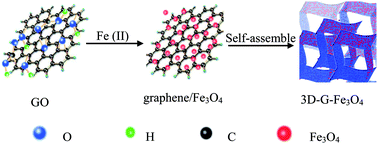Magnetic three-dimensional graphene solid-phase extraction coupled with high performance liquid chromatography for the determination of phthalate esters in fruit juice
Abstract
In this paper, a three-dimensional graphene-based magnetic nanocomposite (3D-G-Fe3O4) was synthesized and used as an effective adsorbent for the extraction of four phthalate esters (dimethyl(o-)phthalate, diethyl(o-)phthalate, diallyo(o-)phthalate and bis(2-propylheptyl)phthalate) from fruit juice prior to high performance liquid chromatography analysis. The three-dimensional nanoporous structure of the 3D-G endows the new material with a high adsorption capacity. The properties and morphology of the 3D-G-Fe3O4 were characterized by transmission electron microscopy, scanning electron microscopy and infrared spectroscopy. Several experimental parameters affecting the extraction efficiencies, such as the amount of the 3D-G-Fe3O4, extraction time, sample pH, salt addition and desorption conditions were optimized. Under the optimum conditions, the limits of detection (S/N = 3) of the method for the analytes were between 0.04 and 0.13 ng mL−1. The recoveries of the method for the analytes were in the range from 87.0% to 97.8%. The result showed that the 3D-G-Fe3O4 has an excellent adsorption capacity for the analytes.


 Please wait while we load your content...
Please wait while we load your content...